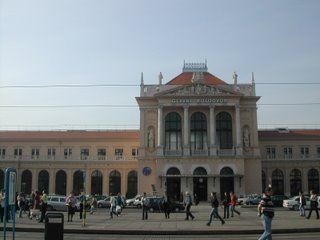Croatia. History of a Crossroads.
1. Deaths writ large - Karlovac
2. Deaths writ small - Osijek
2. Deaths writ small - Osijek
1. Deaths writ large.
Slavko Goldstein, Croatian journalist, publisher, philosopher in his way, wrote a book not yet translated, but there is an extensive review worth absorbing. See "He Understood Evil" at http://www.nybooks.com/articles/article-preview?article_id=22795/
.
- In 1941, the Jewish author Slavko Goldstein was living with his parents in the city of Karlovac
.
The elements are familiar: There is a family from this lovely setting, a medium-sized, working town, regular people. Then deaths on a massive scale. It takes close reading and concentration to absorb all this mass death and history, but do it. How does it happen? This review, from Dialogic, by a Thivai Abhor, http://dialogic.blogspot.com/2009/06/charles-simic-slavko-goldstein-he.html/; focuses on nationalism as triggering disregard for all other interests, rights, see Le Monde Diplomatique, English ed., at http://mondediplo.com/blogs/nationalism-is-the-culprit/. National identity, group identity, has any nation resolved issues of humana vs. immediate self-interest with an ethnic or cultural group.
Croatia has been at the center of Balkan conflict for centuries of invasions, wars, ethnic warring. Find an overview at http://montenegroroadways.blogspot.com/2011/09/roots-of-old-yugoslavia.html. With war criminals still being found and arrested and brought to trial at the Hague, the issue remains important. How could all this happen.
Croatian history: Conflict, invasions, re-orderings. Complex.
2. Crossroads and conflicts. Ancient history to modern.
2.1 Greeks. It began with the Greeks, in a peaceful way, apparently, see Croatian History at http://www.geocities.com/i_canjar/history/crohistory.htm/ . The Greeks established colonies in 600 BC. Here in Croatia, see Cavtat at http://www.croatiatraveller.com/southern_dalmatia/Cavtat.htm.
Then came the Romans.
.
2.2 Avars. Migrating groups soon arrived, although elements of smaller groups may have shared space with the Romans, see http://maviboncuk.blogspot.com/2004/06/avars-bulgars-and-croats.html
.
2.3 Croats. Now begins more forceful takeovers.
Croats came, we understand, from the Ukraine in the 6th Century AD. They defeated the Romans and others at the Adriatic Sea area, and its many ports, in about 614-635 AD. The Croats also beat back the Avars, another group, back to the Danube: then were awarded lands under the sovereignty of the Byzantine Empire, that became the Orthodox branch of Christianity.
.
2.4. King Tomislav.
.
 Capilyn, Bosnia; King Tomislav
Capilyn, Bosnia; King TomislavTomislav first ruled over a unified Croatia - until his mysterious death in 928 when the Roman branch of Christianity was competing with the Orthodox (see http://www.studiacroatica.org/jcs/01/0105.htm and http://bosniaroadways.blogspot.com/2006/06/capilyn-near-croatian-border-statue.html. Then begin the back and forth wars and migrations among Montenegro, Bosnia-Herzegovina, Istria, other regions.
.
2.5 Turkish Ottomans.
.
Invasions of the Turks (Ottomans): see http://www.medievalists.net/2009/08/28/the-ottoman-influences-on-croatia-in-the-second-half-of-the-fifteenth-century/, leading to tensions that persisted and augmented both World Wars, and to today in some regions: Orthodox Christians, Roman Christians, Hungarians, Muslims, Magyars.
.
The capital, Zagreb, became a seat of a Bishop in 1094 a Roman Catholic Bishop, in the conservative and authoritarian Roman mode. This was only after centuries of conflict with the earlier egalitarian heritage of Nin, see Bishop Grgur Ninski who opposed imposing a Latin service on the people, but lost and was deposed.
.
In neighboring Serbia, the Orthodox heritage prevailed, in competition with the Roman, see http://euroheritage.net/serbscroatsbosnians.shtml. That competition continued well through WWII with charges by Orthodox that the Roman clergy stood by while Orthodox were slaughtered in Jasenovac Concentration Camp, offering only "conversion" - of these already Christian people. See http://www.historyplace.com/worldhistory/genocide/bosnia.htm. What proofs of opposing the slaughter has the Vatican provided? Is the issue still current? Apparently so, with the counterattacks on the work of
.
Is group identity and justification always determinative over rights of an individual. When does tolerance end and threat start
.
Ethnic group conflict. A part of any society under stress, or where one feels threat by the emergence of another. In Croatia, there is an added element: groups that lived in concert reasonably for centuries, were turned against one another with horrific results. How did that happen after all that time. What are the roots of genocide.
3. Deaths writ smaller. Individual Death.
Find compassion, details, of individual deaths, in cultures where portraits, stories, are told on the stones: where circumstance permitted individualization.
.
 Osijek, Croatia. Cemetery. Child Therezia, age 16
Osijek, Croatia. Cemetery. Child Therezia, age 16Here is the face and figure of the child, Therezia, who died at age 16 - a random stop to walk slowly through a graveyard near Osijek. Who was she. How did she die. Who were her people.
 Karlovac, Croatia. Ozalj Castle,
Karlovac, Croatia. Ozalj Castle, Railroad Station, Zagreb, Croatia
Railroad Station, Zagreb, Croatia St. Mark's Church, Zagreb, Croatia
St. Mark's Church, Zagreb, Croatia St. George and the Dragon, Zagreb park, Croatia
St. George and the Dragon, Zagreb park, Croatia Miragoj Cemetery, Covered Gallery, Zagreb, Croatia (Orthodox; some German, from WWII)
Miragoj Cemetery, Covered Gallery, Zagreb, Croatia (Orthodox; some German, from WWII) Miragoj Cemetery, Gallery, Zagreb, Croatia
Miragoj Cemetery, Gallery, Zagreb, Croatia Miragoj Cemetery, German section WWII, Zagreb, Croatia
Miragoj Cemetery, German section WWII, Zagreb, Croatia